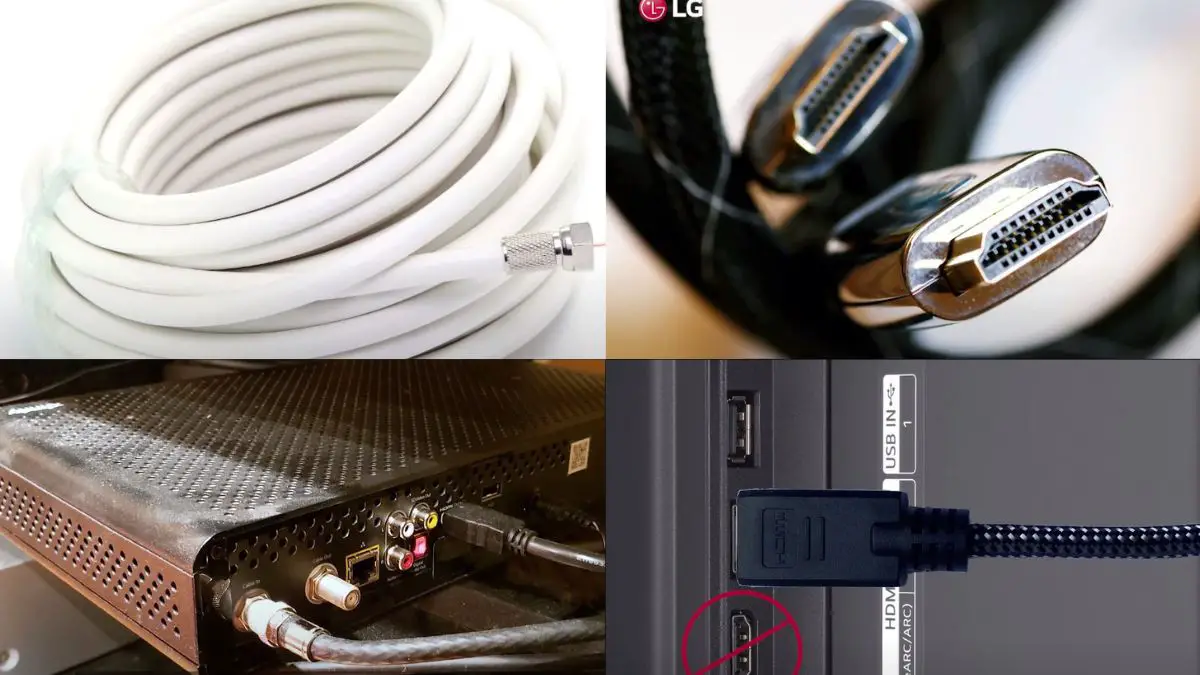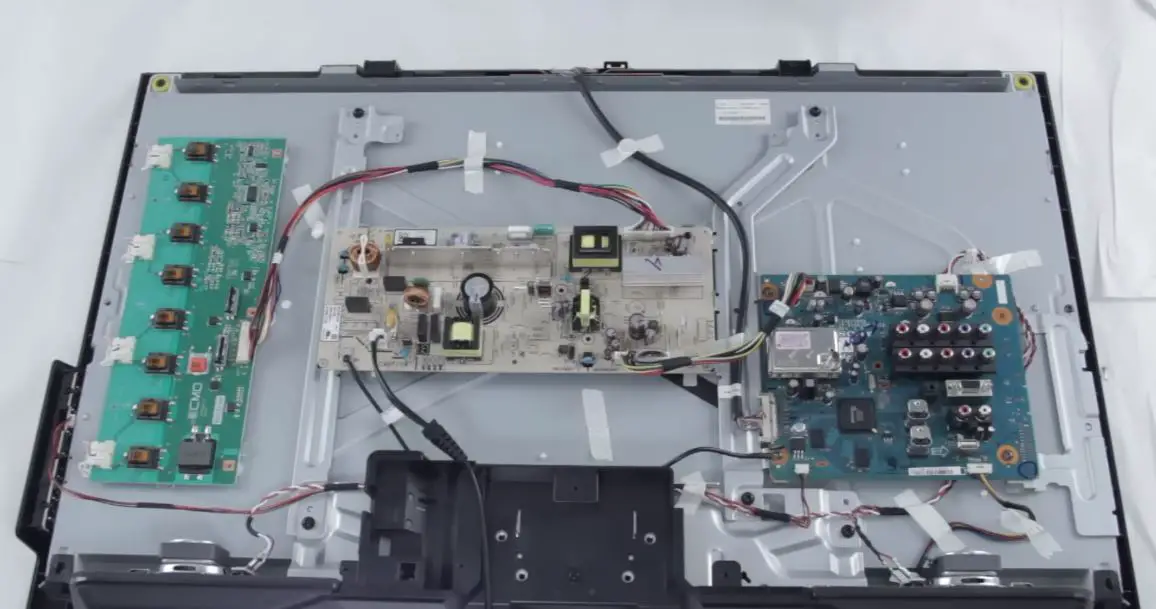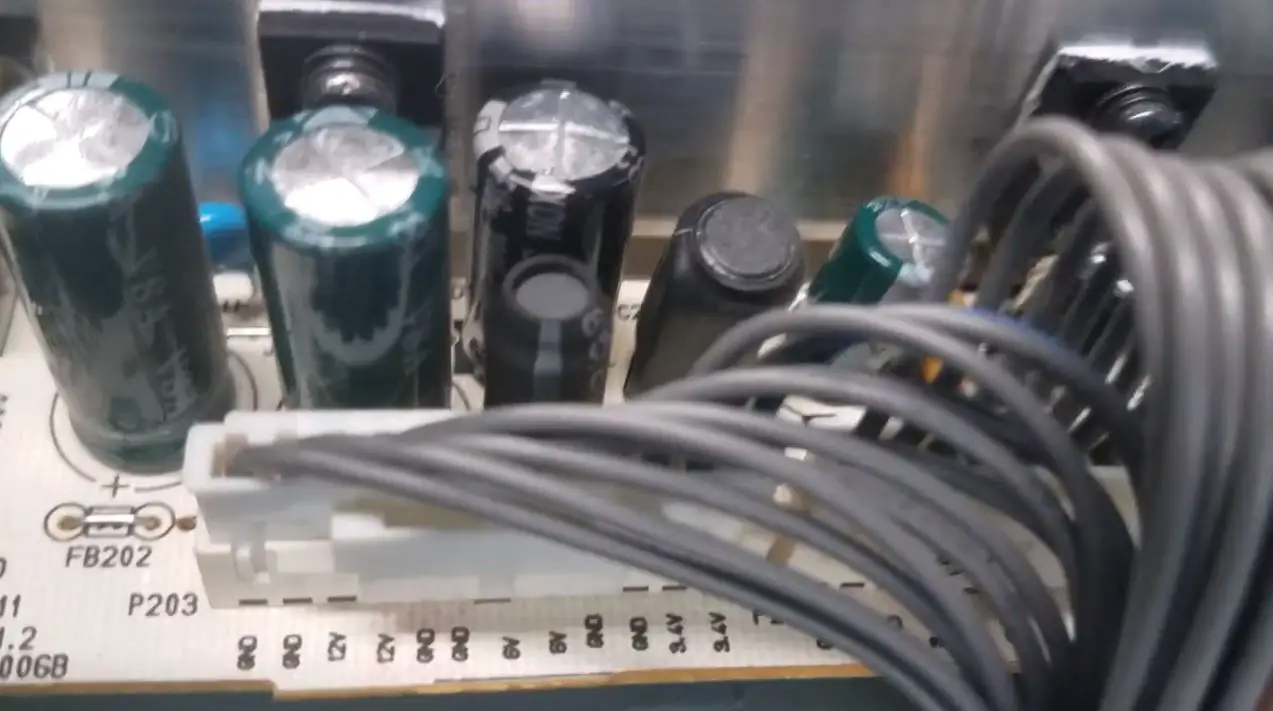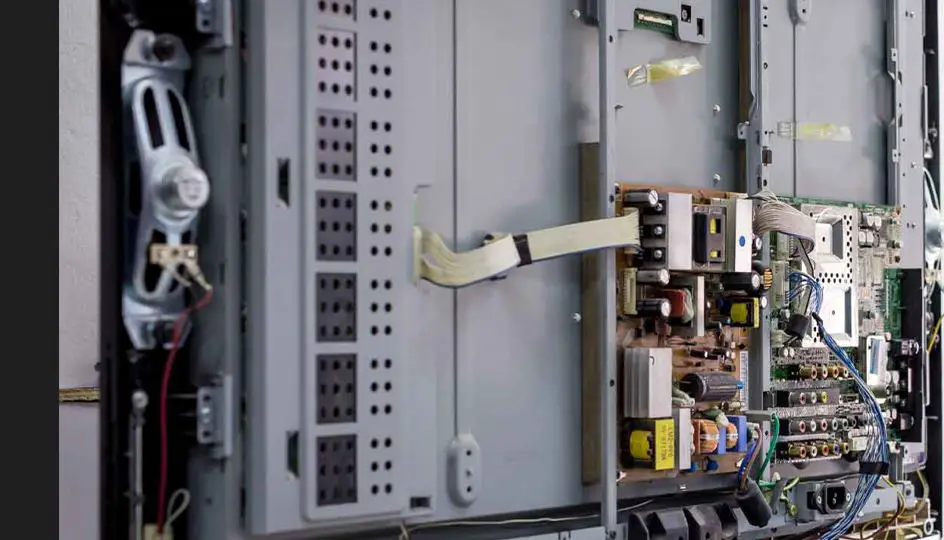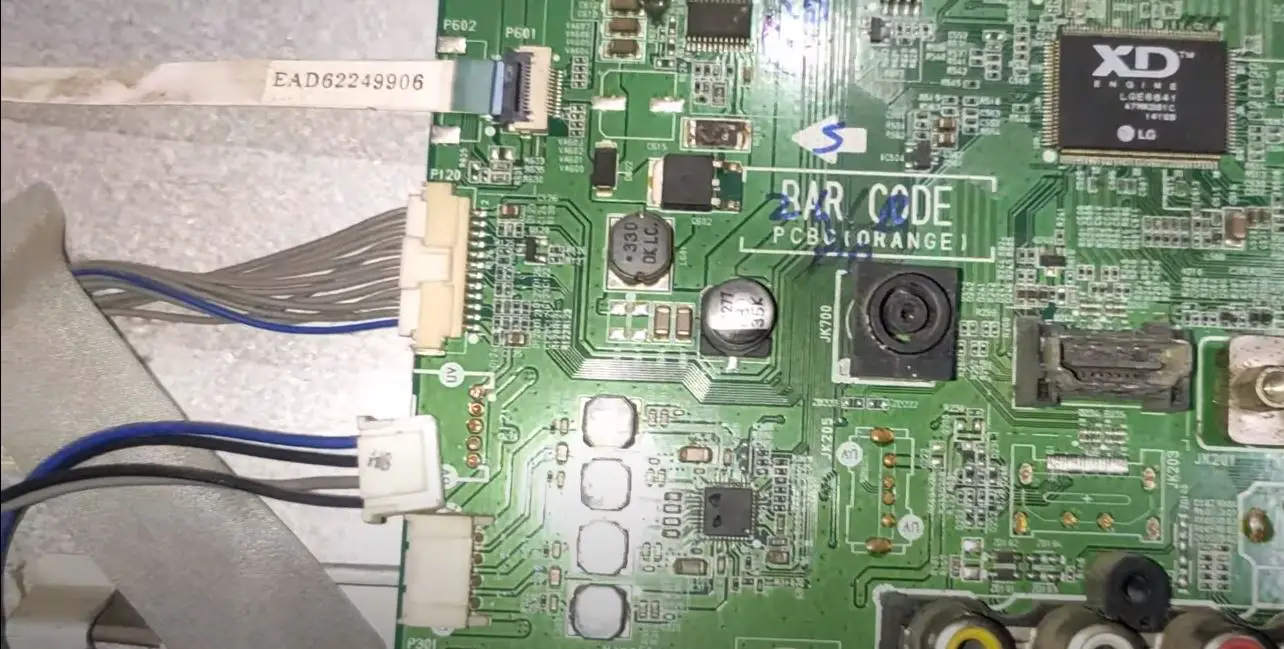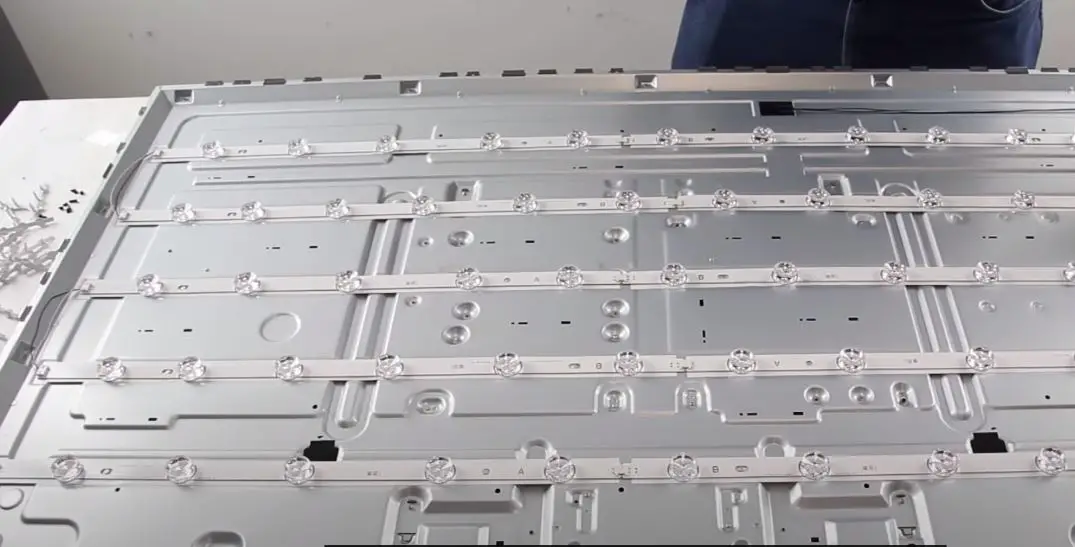It can be frustrating when your LG TV suddenly starts blinking a red light and won’t turn on properly. A blinking red light usually indicates there is some kind of hardware issue with the TV. The good news is that many common problems that cause this blinking red light error are DIY fixable without replacing expensive parts or calling in a TV repair person.
This article will walk you through some of the most common issues that can cause an LG TV to blink red, along with steps you can take to try and get your TV working again. With some basic troubleshooting and component testing, you may be able to pinpoint the culprit and get your LG TV back up and running.
LG TV Red Light Blinking: Troubleshooting Steps
1. Check External Connections and Cables
The first thing to check is all the external cables and connections when your LG TV has a blinking red light. Problems with loose HDMI cables, bent pins, faulty power cords, or loose input jacks can prevent your TV from powering on correctly.
Here’s what you should check:
- Inspect all cables and connectors for any loose connections or damaged pins/ports. Unplug them, then firmly reconnect them.
- Try using different HDMI cables or input ports if available. Faulty or loose cables can cause power issues.
- Ensure the outlet works and firmly inserts the TV’s power cable. Listen for any crackling sounds that could indicate a faulty power cord.
- If using a power strip or surge protector, try bypassing it and plugging the TV directly into the wall. This can rule out a faulty power source.
Sometimes, reseating connections or swapping cables is enough to get an LG TV with a blinking red light to start working again properly.
2. Check For Standby Light – Diagnose The Issue
If you’ve verified all your LG TV’s connections, but it still blinks red instead of turning on, the next thing is to check for standby lights beside the red one.
Modern LG TVs have a self-diagnosis feature using standby light indicators positioned near the power button. You’ll need to count the number of times the different color lights flash to get a diagnostic code:
- Red blinking indicates a hardware fault. This should blink on its own if there is an issue detected.
- Green or orange standby lights will also flash alongside the red in a pattern of long and short flashes.
- Count the number of long and short green/orange flashes between pauses. This number indicates what the possible cause is according to LG’s diagnostic codes.
Consult your TV’s user manual or search online for “LG TV standby light codes” to find what the specific pattern of flashes means. Some possibilities include:
- Bad backlights
- Power supply issues
- Mainboard failures
- Software crashes
- Temporary overheating
Matching the blink pattern to a particular cause can help narrow down where the fault lies within your LG TV.
3. Open The TV Case Safely
Once you know the probable cause of the diagnostic blinking lights, the next step is to open up the TV and inspect the internal components and connections. This is where you need to be careful, as CRT and flatscreen TVs contain high-voltage parts that can retain dangerous electric charges.
Here are some safety tips when opening your LG TV:
- Unplug the TV and press the power button for 60 seconds to discharge the capacitors
- Leave the TV unplugged at least an hour before opening the case
- Use a plastic pry tool and avoid using too much force around the edges
- Never cut cords or place a screwdriver inside the case
- Some models have specific disassembly steps, so search your model # online
Take slow and gentle precautions when taking off the rear casing. Many ribbons and wires may still be attached internally between the front screen panel and the rear cover.
Once inside, avoid touching components as much as possible, and don’t force things out rapidly without inspecting wire connections. Use caution when powered on for testing after repairs.
4. Check Power Supply & Voltages
The LG TV’s internal power supply is likely a culprit for many fault code patterns. This can be from bad capacitors, fuses, or regulator circuits.
Here’s how to test and troubleshoot power supply issues:
Symptoms pointing to a failing power supply include:
- Intermittent TV operation
- The TV is not turning on
- Standby lights but no picture
- Discolored screen and lines
- Excessively hot when powered on
First, use a multimeter to check the standby/aux voltages from the internal supply rails. Consult your model’s voltage specs, but common voltages are:
- Standby 5Vsb @ 1-2 Amps
- Aux 12-19V @ 2-4 Amps
If voltages are outside the specified range, remove and inspect the main supply board:
- Look for bulging/leaking capacitors and burnt spots
- Smell for burning odors coming from regulators
- Probe fuses for continuity if applicable
Faulty capacitors and overloaded fuses/resistors within the supply can keep voltages from regulating properly. Replace any bulging or cracked capacitors with identical specs. Also, replace any fuses not showing continuity.
A properly functioning supply with no overloaded components but still exhibiting incorrect voltages likely means the main regulator or transformer coils have failed internally. This requires replacing the entire supply.
Caution: Always discharge capacitors correctly before testing/removal to avoid serious shock. Replace fuses with identical specs only after resolving overdraw issues.
5. Check and Reseat Ribbon Cables
Along with the power supply, many internal ribbon connectors can work loose or get damaged from repeated heating and cooling cycles within modern slim LG TV designs.
Remove and reseat ribbon cables that match the reported error code location if standby lights indicate an internal hardware error. Common problem ribbon cable spots include:
- T-Con board connection
- Mainboard to panel driver
- Backlight LED connectors
- Internal speaker wires
Check both ends of wide ribbon cables carefully for:
- Broken/torn sheathing
- Popped loose at the crimp points
- Bent or burnt pins
- Dust/grime preventing full seating
Clean dirty connections gently using an electrical contact cleaner applied to a cotton tip or soft brush. If damaged or worn, ribbon cables may need replacement with an identical cable.
Once reseated, firmly press and snap closed all connections. Cables can easily get misaligned inside the case or pull slightly from repeated opening/closing of the screen panel.
6. Inspect and Test Control Boards
If power delivery checks out, a control board failure is the next likely thing to check when encountering an LG TV red light error. This includes issues with:
- Corrupted firmware
- Shorting components
- Processor failures
Main logic boards and integrated driver boards are particularly susceptible to overheating faults and bad parts preventing start-up.
Expansion and contraction of boards during heating/cooling cycles stress solder points. Controller chips and transistors can also overload or shorten internally over time. Common problem areas include HDMI ports, ribbon cable headers, memory ICs, and voltage regulators.
Check controller boards closely for any signs of shorting, like burn spots or corroded traces. Use a multimeter to check for shorts between board traces. Clean with an electrical contact cleaner and probe components for out-of-spec values if needed.
A short circuit may be present if boards get extremely hot rapidly upon applying power. Power down and carefully check shorts between all pins on large ICs and regulators using a multimeter.
You can narrow down a bad chip/section by carefully testing signal lines across input/output pins around the detected short. Replace the minimum subset of components needed to resolve the shorted path causing errors to save cost.
For software glitches, the newest LG models may only need a forced firmware reflash of boards using USB service tools to recover. If replacing components, use the same model/specs for proper operation.
7. Replace Backlights
For an LG TV that suddenly won’t power on and blinks red, often it’s due to damaged LED backlights that are shorted internally. This trips protection circuits that prevent startup to avoid further supply damage.
However complete LED bar replacement can be expensive. First, check for dark areas or intermittent blank segments which indicate localized shorts:
- Inspect the panel edge and backlights carefully for any cracked encasings or debris causing external shorts between lines.
- Clean any corrosion along the metallic strips running along each backlight bar that provide voltage.
- Use a multimeter to check for continuity across individual sections to pinpoint problem areas.
If shorts are isolated to small sections, repairs may be cheaper by just replacing a portion of the LED bars. LED segments between vertical tape layers lift out after removing adhesive strips. Solder/connect replacements match the old segment length while carefully insulating connections.
For complete backlight failure, a new replacement bar set will be needed. For edge-lit designs, ensure the correct length, shape, and pinout. Replacement kits should come with installation brackets. Take care of sealing bars to avoid future moisture infiltration.
Conclusion
LG TV’s flashing red standby lights can certainly be frustrating and seem daunting to address. But in many cases, the problem is related to just damaged cables, faulty power delivery, or overheating components.
By methodically troubleshooting connections, testing power rails, and inspecting internal hardware, many DIY-ers successfully restore functionality without expensive mainboard swaps. Routine cleaning and maintenance can also extend the reliable lifespan of modern slim television designs.
Utilizing the built-in self-diagnostic features, like standby light codes, makes isolating faulty LG TV components much quicker. Following safety precautions and using proper tools to reopen the chassis also minimizes the risk of electrical shorts or damage.
Don’t be afraid to crack open that malfunctioning flatscreen and tackle basic component replacement yourself before calling a costly TV repair service. With some perseverance, there’s a good chance you can get your LG TV back up and running while saving hundreds of repair dollars.

